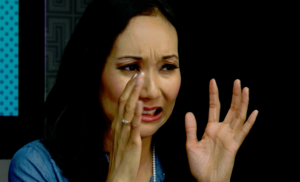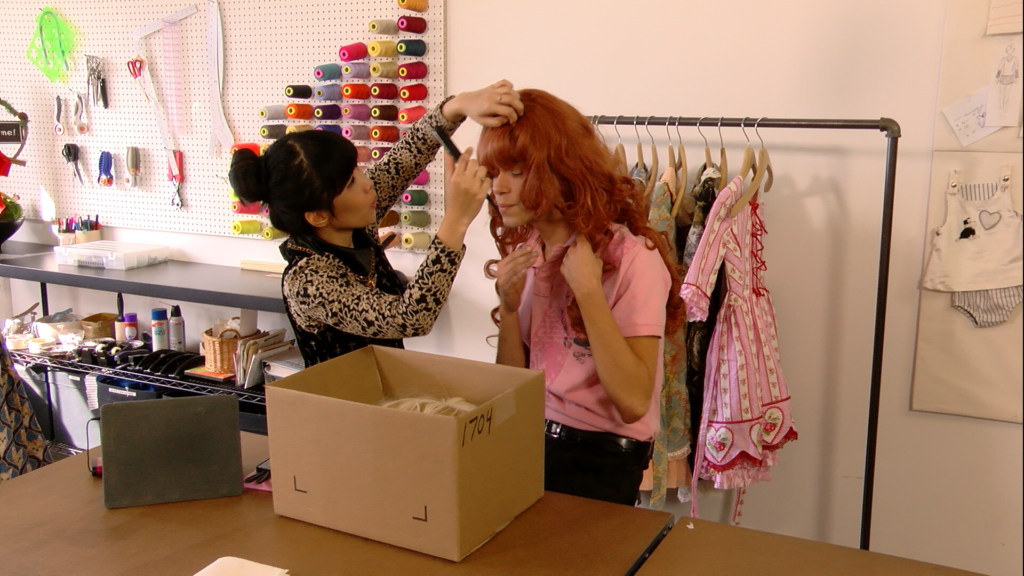By Olivia Wolf
AsAmNews Staff Writer
The Asian American female owned production company, Thirsty Tiger Television, will soon have two shows streaming on Netflix in the U.S.
Both series feature majority Asian American casts, a much needed change in an industry where AAPIs constitute only three to four percent of speaking roles.
When Asian Americans are given roles, they are often typecast as asexual nerds, submissive prostitutes, and forever foreigners who can barely speak English. Almost always they are side characters used to enhance the story lines of White leads.
In Eat Your Words contestants who have written negative restaurant reviews must put their money where their mouth is by cooking for a panel of judges who score them on a five star scale.
“In the age of social media anyone who goes to a restaurant thinks they’re a food expert, and they’re happy to broadcast their picky opinions all over the internet,” says host Kara Birkenstock.
If contestants receive at least three stars, they receive a gift certificate to a restaurant. However, if they fail to do this, they must “eat their words” and rewrite their negative review.
In terms of contestants and judges, the cast is over half Asian American, including Birkenstock who herself is half Thai and half Filipina (and yes, her real last name is Birkenstock, as her website profile jokingly clarifies). 
With food personality David Chang hosting Ugly Delicious and Asian Americans winning Top Chef, it seemed to producer Valerie Chow that food was a great way to mainstream Asian Americans on television.
“Everyone loves food, so while we are sharing the voices of Asian Americans, the show still has universal appeal,” said Chow in an interview with AsAmNews.
The premise of The Doll Life is perhaps a little more niche, but still appealing to those who don’t follow the doll-inspired Japanese street fashion that the show focuses on. The series is a spin-off from an episode of Chow’s show I’m Asian American and….
The diverse cast of The Doll Life also includes African and Latino Americans, many of whom have been subjected to a slew of harassment on social media. Commenters often call Ashford, who is an African American model, the N-word and question why she would be interested in Japanese fashion. They also often accuse Cyril Lumboy, the Filipino American fashion designer, of lightening her skin, which she does not do.
The show is able to highlight these issues, while still being entertaining.
“I still laugh when I rewatch certain moments, even though I’ve seen them a million times by now,” said Chow. “I like to create programs that are fun and thoughtful, but don’t feel like an after school special in racial diversity.”
The show also passes the Bechdel Test, which requires that at least two named women have a conversation about anything other than a man. It is a relatively low standard that should not be difficult to achieve, but unfortunately has been for most of Hollywood’s history. Out of 7,600 analyzed films, only about half passed.
The Doll Life focuses on the relationships between the primarily female members of the “Dollhouse” and how they support, and sometimes don’t support, each other during the highs and lows of fashion shows and daily life. They become a sisterhood and a family.
While the first two seasons of Eat Your Words premiered on Netflix in February, The Doll Life will not be released until an undisclosed future date in the United States, but it is already streaming in Netflix UK, Ireland, Canada, Australia, South Africa, NZ, India and Argentina, among others. It can currently be viewed on Myx TV, a television channel that caters to the Asian American community.
When Chow was growing up in the South during the ‘80s and ‘90s, Myx TV did not exist, and neither did any shows starring actors of Asian ethnicities. She remembers the neighborhoods that she lived in as being heavily segregated and racist. While her family was Chinese American, she lived in predominantly White neighborhoods.
“Margaret Cho was the first Asian American I saw on TV [in 1994],” Chow recalled. “It was something you just didn’t see.”
While having shows by Asians for Asians is significant in itself, Netflix will bring the two series to a much broader audience. As with anything that has crossed racial barriers, the casts have been both celebrated by diversity awards and scrutinized by social media.
On Twitter, one person wrote, “I love the show, but why are there so many Asians? Not that I have a problem with it.”
Chow hopes that with more exposure, such as the kind that Netflix will bring, seeing Asian faces on television will be normalized and not so jarring to viewers.
“As Asian Americans, and people of color in general, we’ve been watching shows starring White America our entire lives. Not that we have a problem with it,” said Chow. 
The first season of Eat Your Words was a low-budget project recorded in somebody’s living room. Its favorable reviews led to better funding for the second season and increased its production value.
These baby steps in gaining attention and creating more and better work are representative of how Chow envisions Asian American media will seep into mainstream pop culture until it has its own “Black Panther” moment.
“We are what America looks like,” said Chow, “and this is what America is rapidly becoming.”
AsAmNews has Asian America in its heart. We’re an all-volunteer effort of dedicated staff and interns. Check out our Facebook page and our Twitter feed, Please consider interning, joining our staff or submitting a story for consideration.


